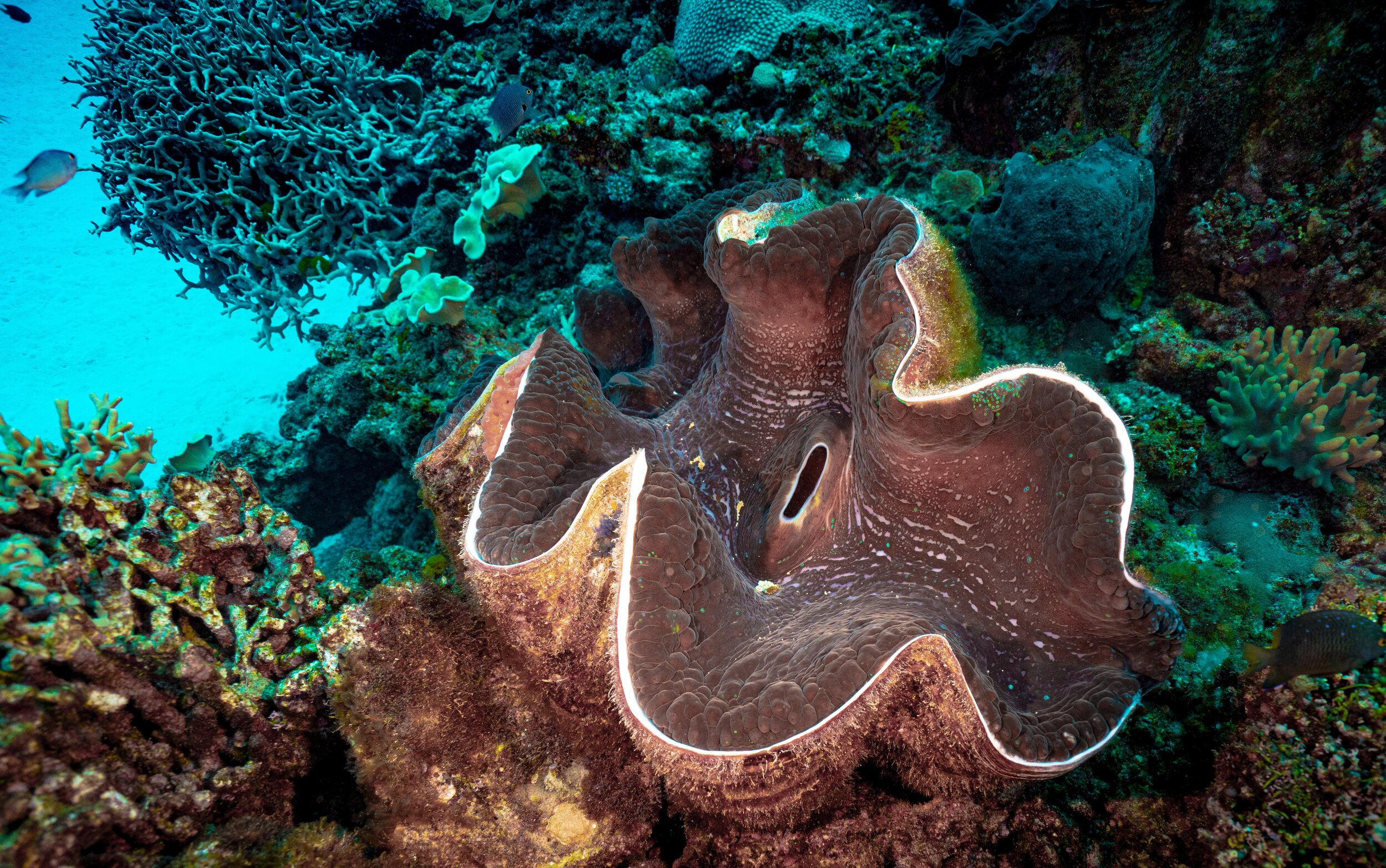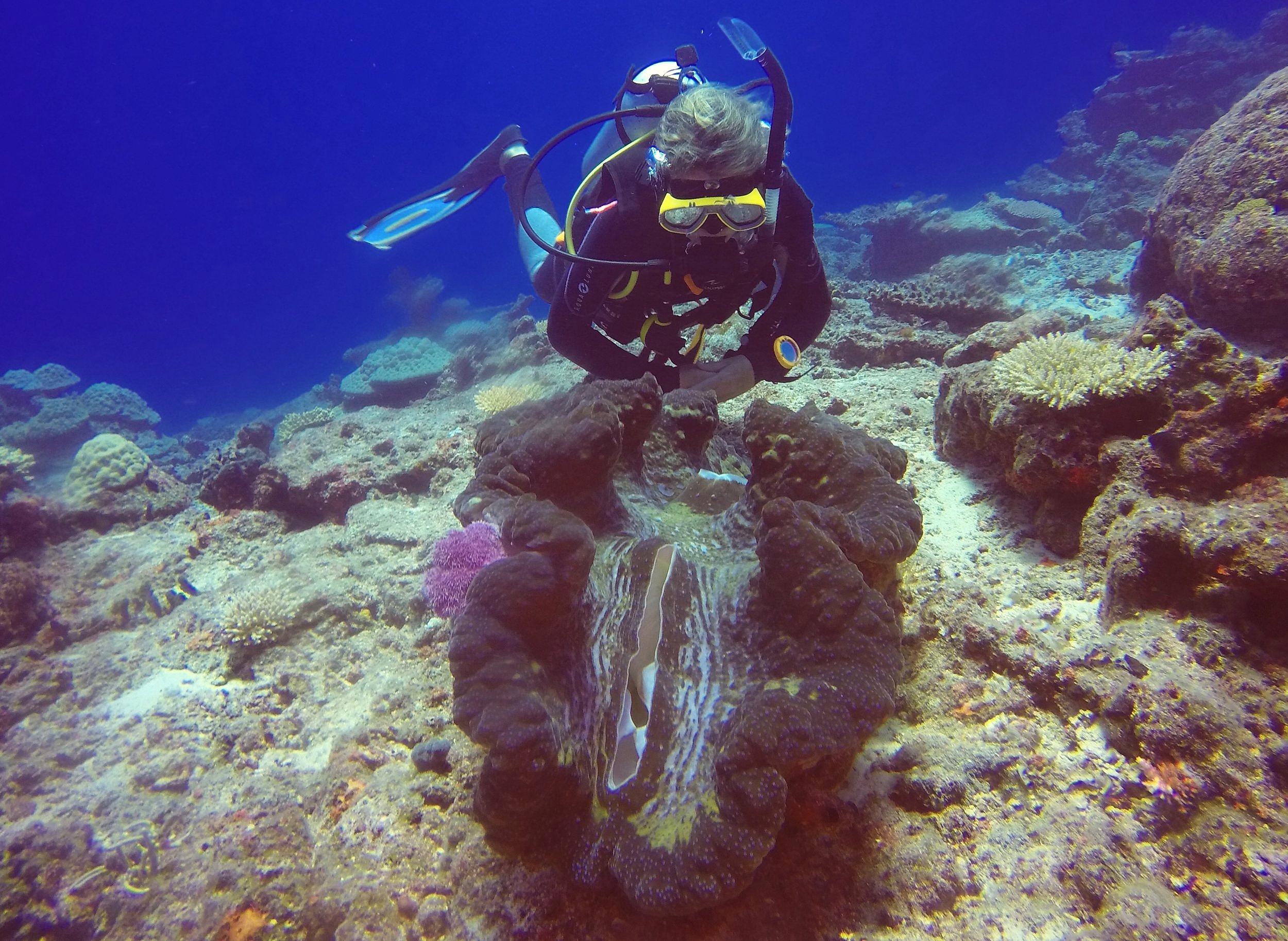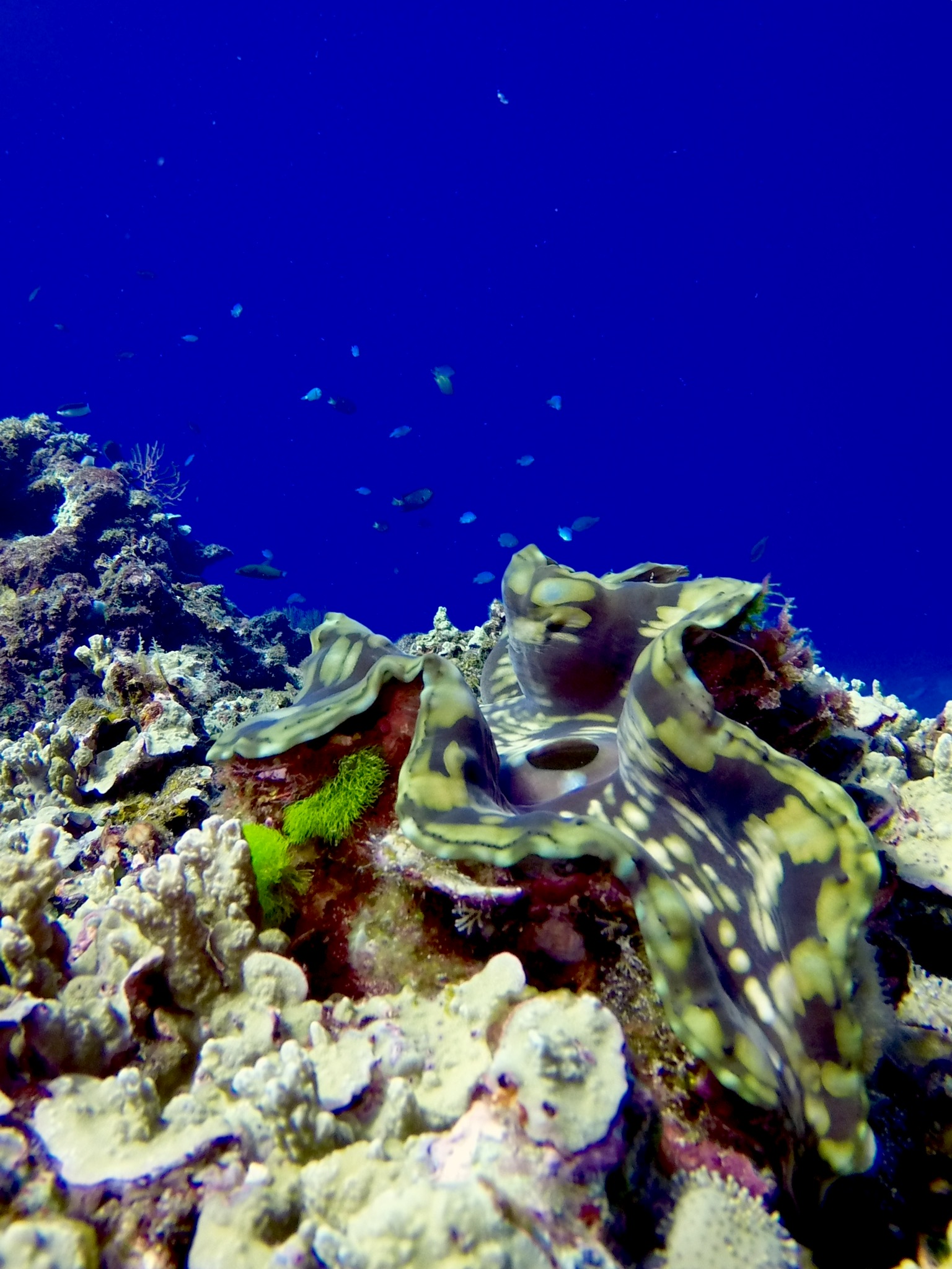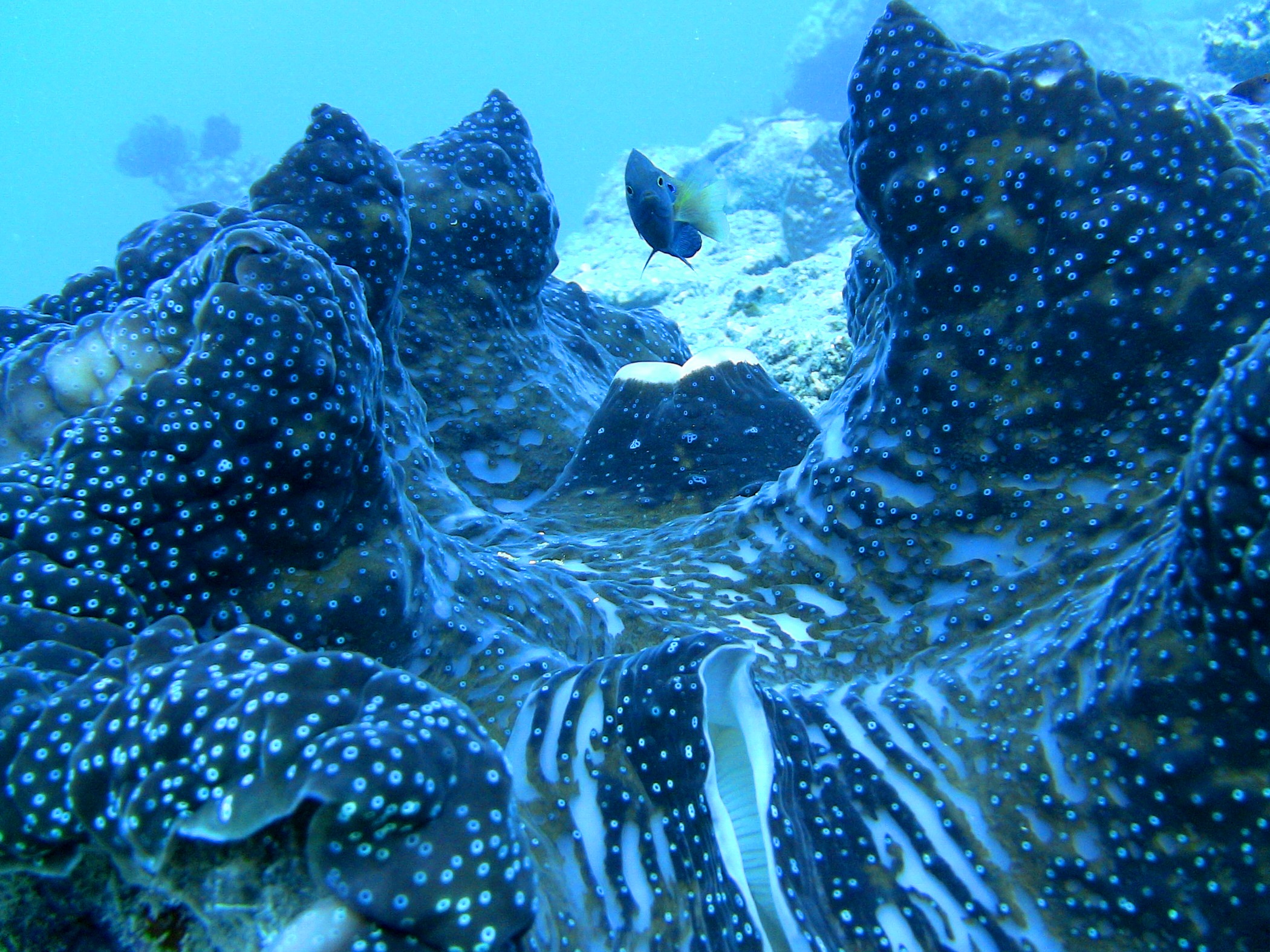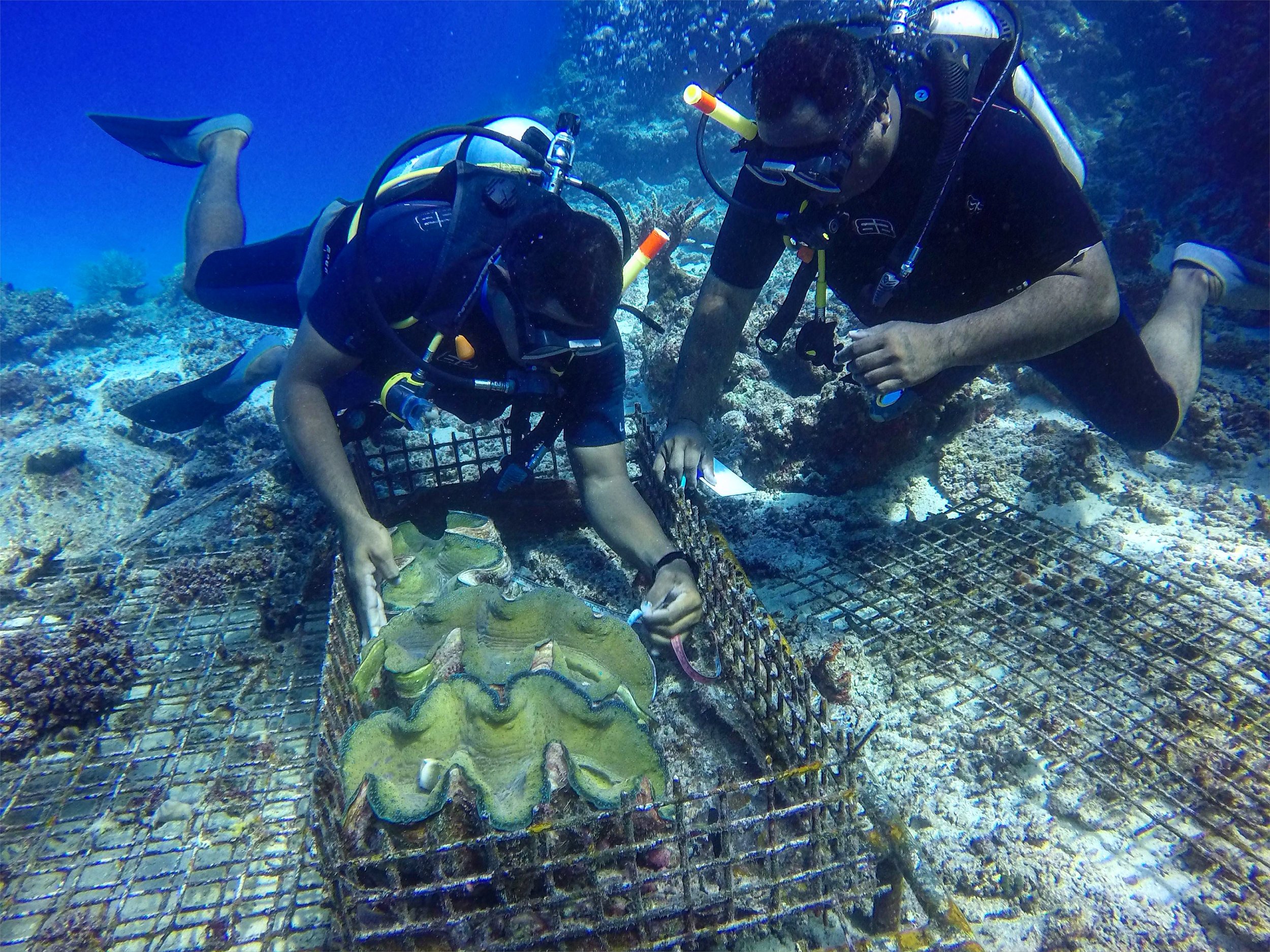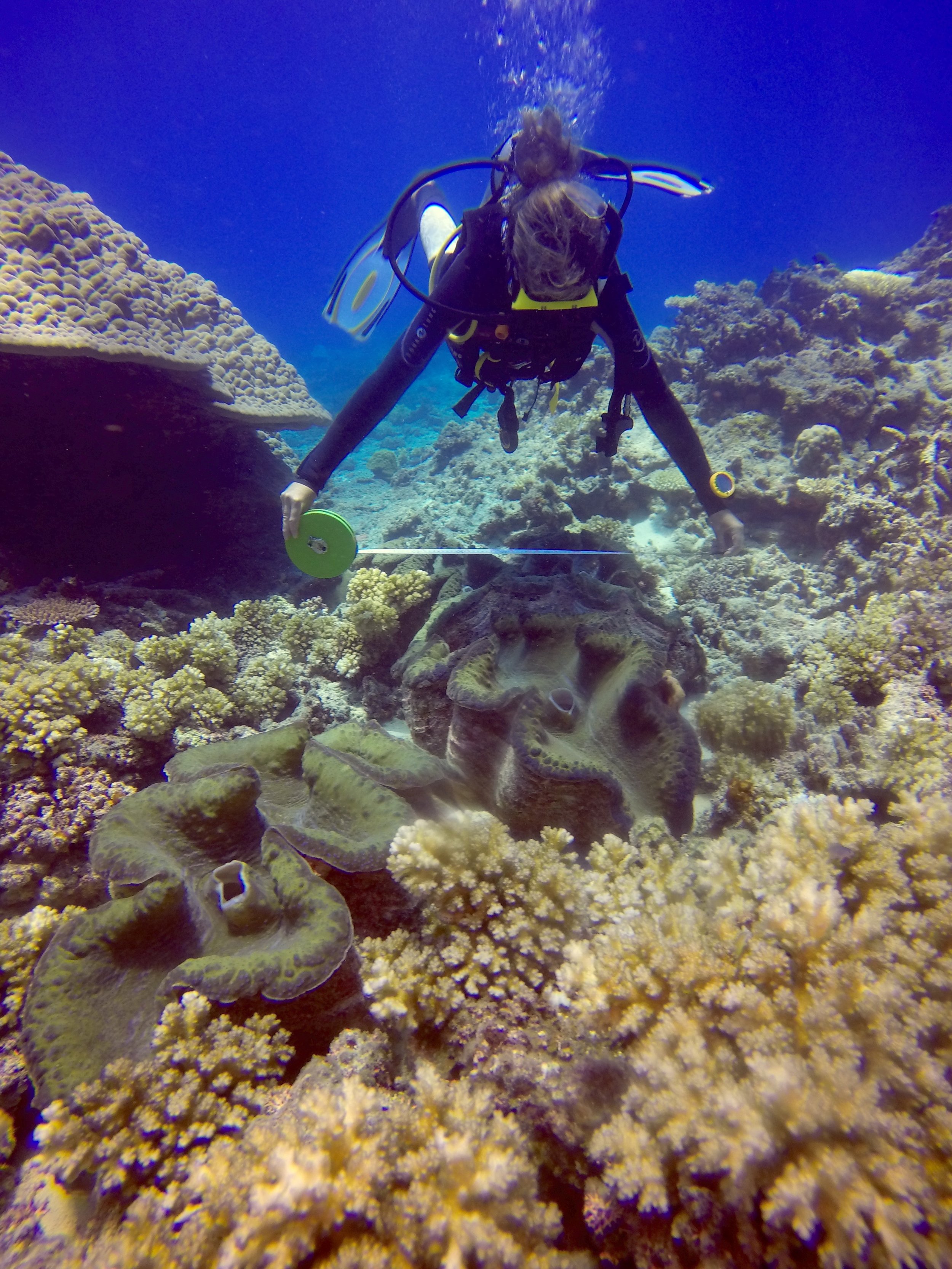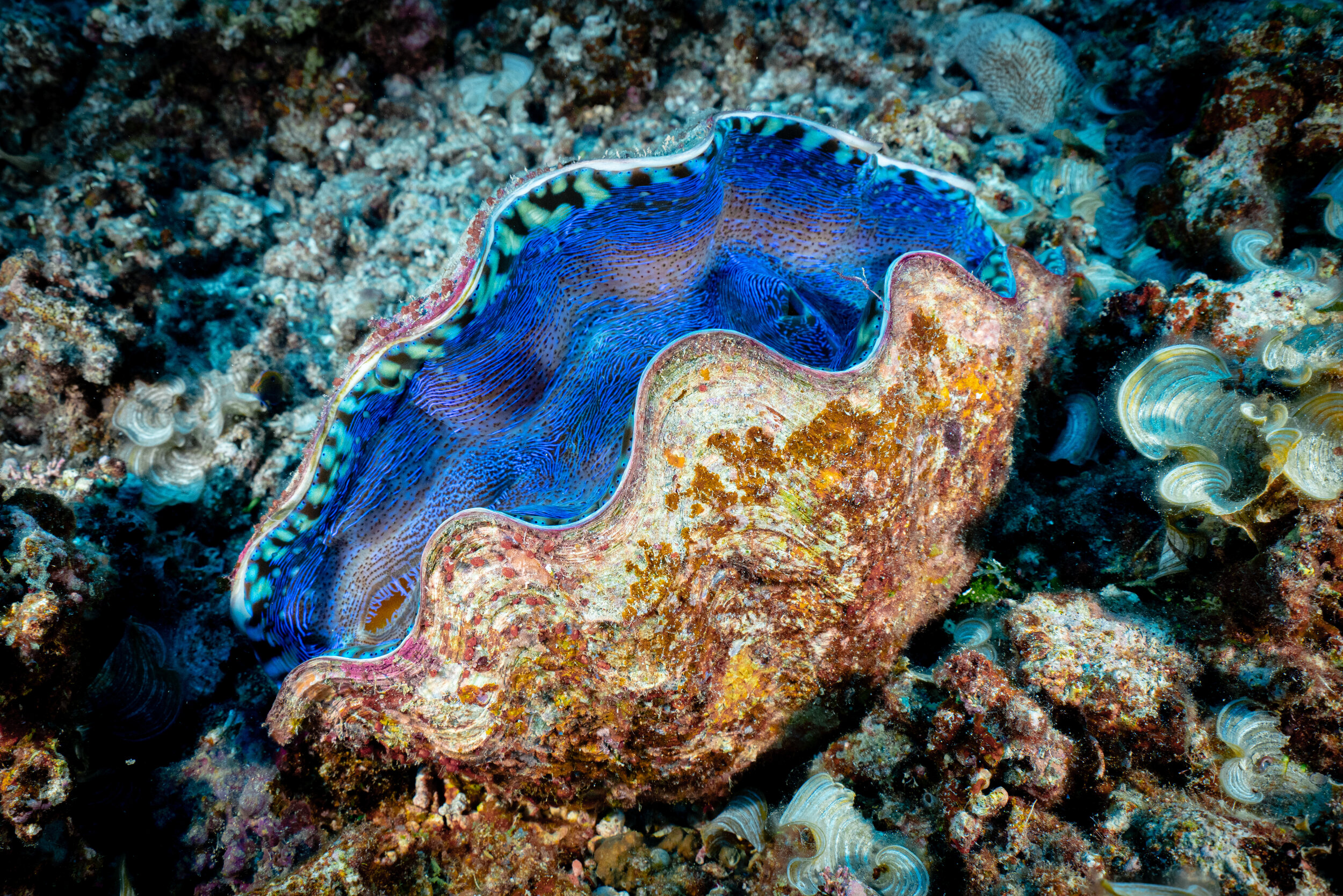
Dive on Fiji's Biggest Giant clams
Giant Clam Project
A not to be missed dive site to experience whilst diving with Tokoriki Diving is our Giant Clam dive site. Suitable for experienced and beginner divers alike, the Giant Clam Dive is not just unique, it’s also educational and awe inspiring.
Depending on your dive experience levels, competent certified divers can dive over critically endangered clams almost 2 metres in size (the largest in Fiji), whilst beginner divers spend time looking at the Giant Clam nursery.
Learn more about the Project and the significance of Giant Clams
Tridacna gigas, or the giant clam, is the largest bivalve on earth. It can weigh heavier than 200 kg/ 440 lb and reach more than 2 metres / 6 feet in length. In ancient Fiji the shells grew so big they were used as baths for the children of chiefly families.
Once widespread in the South Pacific, numbers of giant clams have reduced dramatically through over fishing for meat and shell, to the extent that they became extinct in many places, including Fiji.
In the 1980s Tridacna gigas clams were brought from the Great Barrier Reef in Australia to start a Fiji Government-run breeding program on the island of Makogai, and in 2000 Tokoriki Diving project based at Tokoriki Island Resort was the first to reintroduce them to the west of Fiji. On and off during the first 20 years of the project, baby giant clams (the size of matchboxes) were shipped from the Fisheries Station on Makogai Island to Tokoriki Island Resort. Despite the best of intentions there were always geographical, logistical and financial constraints. The scientists working at Makogai Island were knowledgeable and true champions of conservation, but their project was underfunded by Government, and their ability to breed giant clams was impacted.
Despite the challenges we did receive stock of over a thousand juvenile giant clams of which some went on to become the largest giant clams in Fiji.
Caring for Giant Clams
Once at Tokoriki the giant clams were placed on the reef in metal cages which help protect them from predators such as trigger fish, wrasse and particularly octopi. The cages are regularly cleaned and the clams inspected for parasites. When, after several years, they reach twelve inches/ thirty centimetres, they are moved out onto the reef.
We placed clams on two sites. The largest, and oldest, on the Magic Mushrooms pinnacle, and two batches on Tokoriki Wall, our house reef. In addition to the "true" giant clam T. gigas we also have numbers of T. squamosa (fluted giant clam) and the beautiful T. derasa (smooth giant clam). Growing wild on the reef is the smaller T. maxima (maxima giant clam).
The aim of the project is to create a colony of clams in a protected area to allow successful breeding. This will hopefully allow regeneration of the species not only on the reefs around Tokoriki but also across the west of the country.
The Life Cycle of Giant Clams
Giant clams reproduce by releasing first eggs and then sperm into the ocean currrents. As they cannot fertilize their own eggs, grouping large numbers of mature clams together hugely increases the numbers of viable eggs.
A fertilized egg will float on the ocean current for twelve hours before hatching takes place. The resultant larva develops a foot which allows it to move along the sea floor, and can also swim. While mortality is extremely high, the tiny clams can cover many miles in the week before they settle on the reef, allowing potential colonisation of large areas of sea.
The baby clams need a great deal of luck. If they fall into deep water, they will not receive enough sunlight to survive. If they are too shallow, wave action will prevent them from attaching themselves to the reef, and if they land on sand, they will soon suffocate. If a clam is fortunate enough to find itself on a piece of protected reef of the right depth, it now has to run the gauntlet of a wide range of predators, from tiny snails and boring sponges to massive moray eels and ten foot nurse sharks. Then there are the dangers of huge swells from winter storms and summer cyclones.
Given all of this, by the time a clam reaches sexual maturity after six or seven years it has been through a lot. Now it's main threat is from human hunting, because Pacific islanders just love to eat fresh vasua. This is where our project will really help. A giant clam can live for over a hundred years, and release many millions of eggs through it's lifetime. So assisting the clams through their first years - and sadly still losing many along the way - and then protecting them as adults in breeding colonies so that their offspring can repopulate the local area for the benefit of species and fisherman alike.
Hurricane Winston, Poaching, Covid Years.
Hurricane Winston hit Fiji in February 2016 - the strongest cyclone ever recorded in the Southern hemisphere, and although we had taken precautions by moving as many clams as we could into deeper water, we did loose alot. Worse still, Winston destroyed the Fisheries Station on Makogai including the scientific breeding program instrastructure and many of their brood stock. As a result of such losses the breeding program ceased.
The Tokoriki Giant Clam program was now more important than ever. We now were the custodians of Fiji’s only mature Tridacna Gigas clams.
In 2018, it seemed that word was out and we lost 12 of our largest giant clams to poachers from the mainland. Giant Clam meat is not only a delicacy in Fiji, but also Asia. Despite filing police reports and identifying a suspect vessel, our complaints fell on deaf ears. Demoralized, we moved our remaining clams on to our home reef, where we could at least watch over them daily, and have security keep an eye each night. This was no easy task as some of our larger clams weighed upwards of 100kg/ 220lb.
In 2020 we moved our Giant Clams again into deep water where they stayed safe in the Covid years. On re-opening in March 2022, we shifted some of these large clams back in closer to the reef so that they could be enjoyed by our diving guests.
Current.
Rick and Jamie Isbell, owners of world famous surf resort - Tavarua, became as fascinated by Giant Clams as we were, and began their own breeding program. We too had considered this, but financial and geographical constraints meant that Tokoriki Island was not a suitable location. Tavarua however is. Rick had the location, the finances and the drive, but not the mature giant Tridacna Gigas clams. In 2024 we donated two of our large mature (and breeding) giant clams to Tavarua Island. Toko and Riki spend most of their time in the beautiful vibrant coral reef close to Tavarua Island, but once or twice a year they are carried to the breeding tanks for induced spawning.
This takes place in a confined area so that the fertilized eggs are not lost in ocean currents. Toko and Riki give Rick, Jamie and the Tavarua team thousands of juvenile giant clams to re plant into the ocean when they are large enough - as well as to us.
We are incredibly grateful that we are now able to add to our Giant Clam program. A project that was started in 2000 and is now stronger than ever in 2025.
The Tokoriki Giant Clam Program is a legacy that Tokoriki Diving wishes to leave for the future generations of Yanuya Island. It’s also a dive site that has given pleasure and inspiration to many of our diving guests, some of whom have seen the giant clams grow for almost as long as we have. A particular Vinaka Vaka Levu to Sandy Gunderson, whose beautiful photos can be seen on the wall of our dive shop.
+679 972 4068

